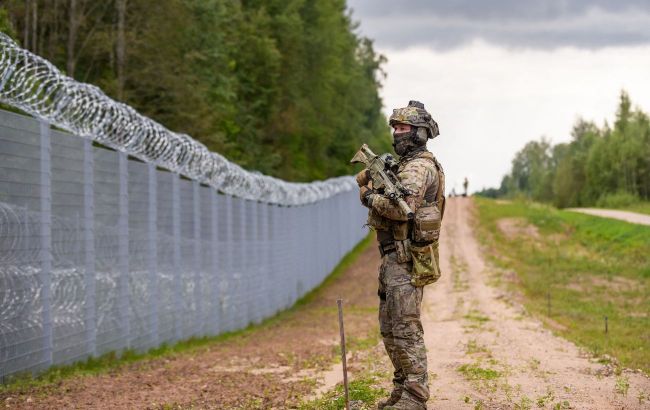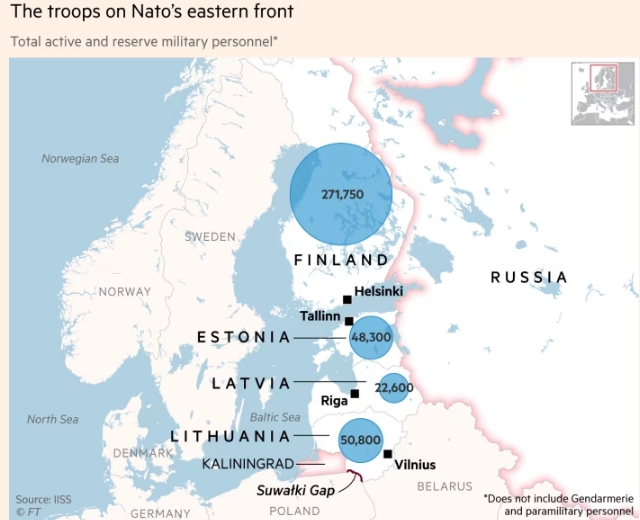Baltic countries fortifying borders with Russia - Financial Times
 Photo: Baltic states are strengthening their border (Vitalii Nosach, RBC-Ukraine)
Photo: Baltic states are strengthening their border (Vitalii Nosach, RBC-Ukraine)
Estonia will significantly strengthen NATO's eastern border with Russia. Hundreds of reinforced bunkers will be built as part of a new defense line to protect the Baltic states - and by extension the entire Western defense alliance - from Russian attack, according to Financial Times.
To the south, Lithuania is opening more than a dozen so-called anti-mobility parks, such as anti-tank barriers, barbed wire, and concrete blocks, which are designed to slow down potential invaders. Latvia, like the other two Baltic states, and Finland have also installed fences on their borders with Russia and Belarus.
According to the agency, these works are a clear sign that security in NATO's frontline states is now determined by Russia's war in Ukraine. Last summer, Russian troops prevented a counteroffensive by Kyiv and regained the initiative on the battlefield. The leaders of the Baltic states, who saw a Russian defeat in Ukraine as the best way to guarantee their security, now see the tide of war turning in Moscow's direction.
Recent months have brought a flurry of warnings about a possible Russian attack on NATO within the next decade. Not only have Vilnius, Riga, and Tallinn sounded the alarm, but also Ministers in Stockholm, Berlin, and London have predicted a possible confrontation within two to eight years.

Photo: Financial Times
Danger for Baltic States
Regional leaders see the three Baltic states-with their small territories and narrow land links to the rest of NATO as a place where a bolder Putin might try to test the alliance's unity and resolve through destabilizing provocations or even a direct military attack.
These fears are exacerbated by the prospect of Donald Trump returning to the White House after the November presidential election, which will raise serious doubts about the US commitment to European security at a time when few officials or analysts believe in Europe's ability to defend itself.
Along with the growing nervousness, there is a sense that the Baltic states are safer than they have been in centuries because of their membership in NATO. This is a "paradox," as Lithuanian Prime Minister Ingrida Simonyte acknowledges. The Western defense alliance was strengthened last year with the accession of Finland and Sweden, turning the Baltic Sea into what Šimonite calls a NATO lake.
NATO countries, led by Germany, the United States, the United Kingdom, and others, are sending additional troops to the Baltic states and other frontline states. Estonia, Latvia, and Lithuania are ready to significantly increase defense spending to 3% of gross domestic product in the next few years, well above the NATO target of 2%, which Trump believes may be a requirement for US defense.
At the same time, Russia is bogged down in Ukraine, and its western border areas facing the Baltic states and Finland are virtually free of troops. Margus Tahkna, Estonian Foreign Minister says they are safer than ever before. If Putin tests NATO, NATO will work, he emphasizes.
Estonia, Latvia, and Lithuania joined NATO almost exactly 20 years ago, a few weeks before they became EU members. Annexed by the Soviet Union in 1944, the three countries regained their independence in the early 1990s. Their frequent warnings of Russian revanchism were ignored - a mistake that French President Emmanuel Macron and other European leaders have recognized.
Russia has been recruiting soldiers since the creation of the Leningrad Military District. According to UK intelligence, Russia will have to decide whether the new units will remain in their garrison locations after they are created or whether they will be transferred to operations in Ukraine. Previously, the newly created units were immediately deployed to Ukraine.

